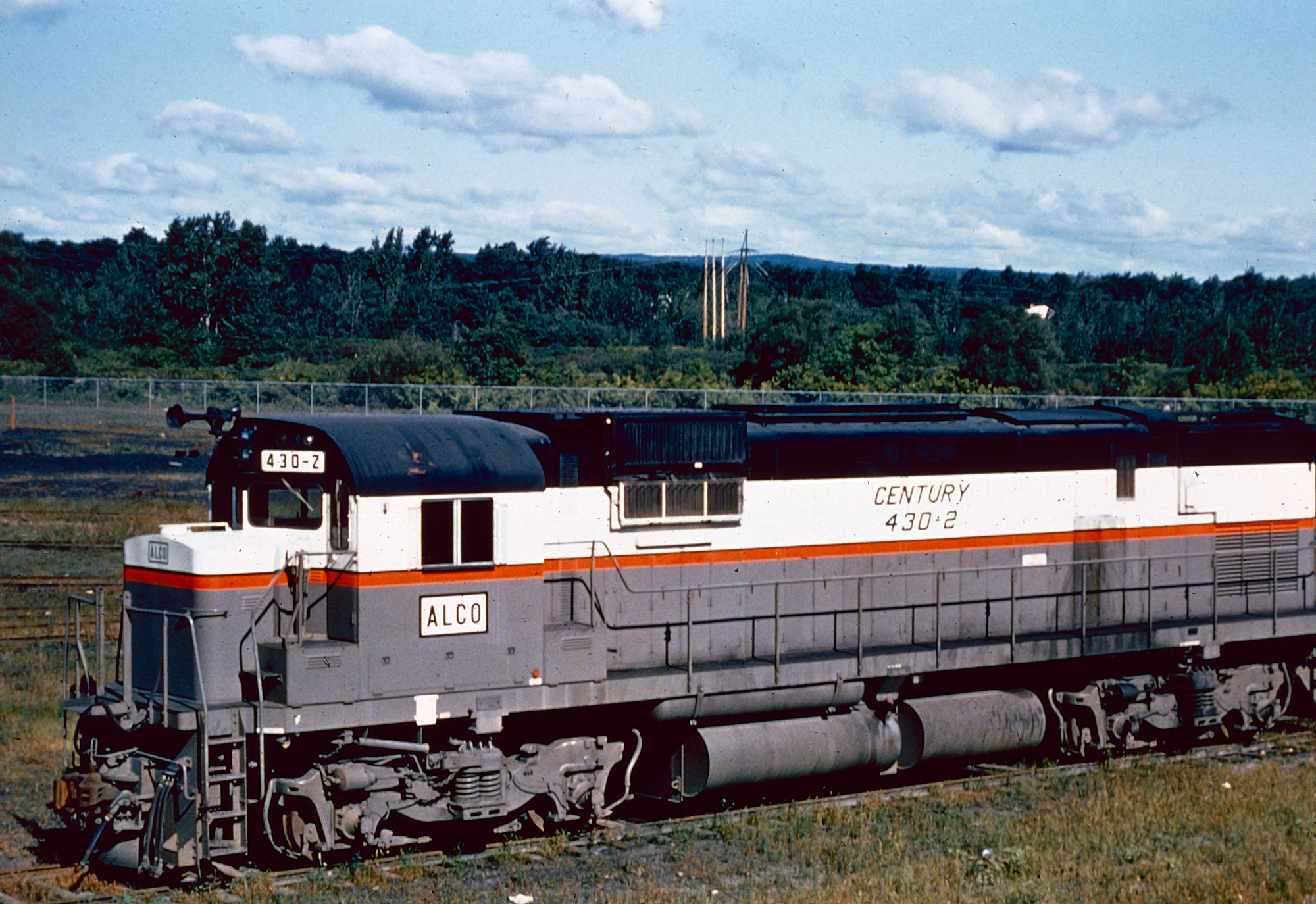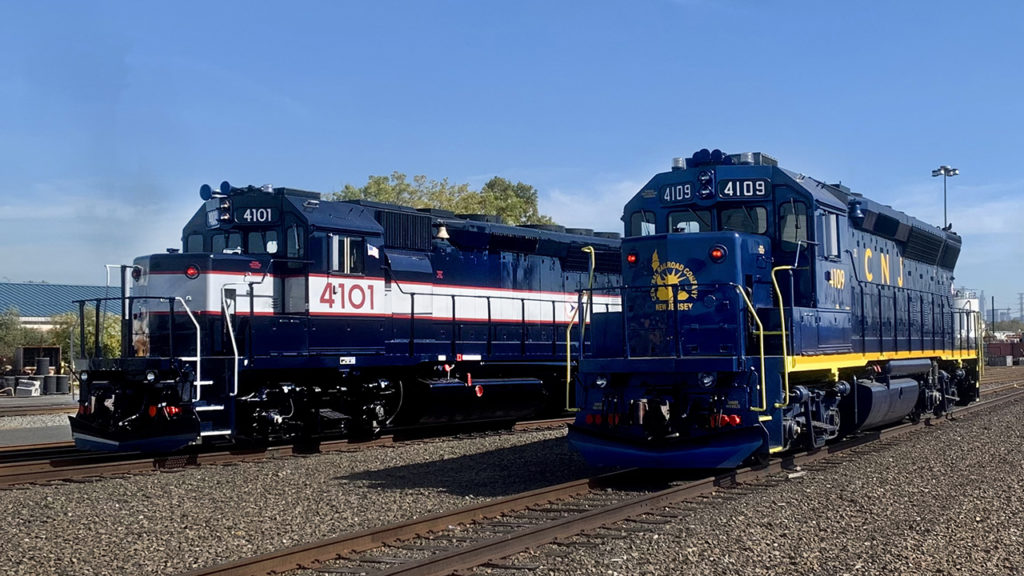C430 demonstrator #430-2, showing off the odd Alco Hi-Adhesion truck with the big coil springs off the side, which Alco promoted heavily on the C430, C630 and C636. The design was supposed to reduce weight transfer fore and aft, which caused loss of traction, but according to those who were familiar with the design, they only thing it did was make them ride really damn rough.
The C430 had originally begun life marketed as the C428, which was to have been a 2,750-horsepower, four-axle locomotive, powered by the same engine as the C628. Due to the complexity of DC generators at this level of power, they decided to use an AC generator feeding DC traction motors, and between the horsepower freed up by the AC generator and the trend toward 3000hp 4-axle units from the competition, the C430 was developed instead.
While the GP40 was a rousing success and the GE U30B sold fairly well, the C430 was an outright bomb. Part of it was that previous Alco products had worn out Alco's welcome on a lot of railroads, and Alco's customer service, or lack thereof, was also doing them no favors. D&H said that when they made the jump to GEs, it wasn't that GE built a better locomotive, but that GE had better customer service and technical support, and Alco was an on-line customer of D&H's!
The C430 also just wasn't a particularly good locomotive. The AC/DC power transmission system was reportedly quite fiddly, and it required railroads to stock a new supply of parts. This was a big complaint of GB&W's; it had an entirely different electrical system than all the other Alcos on their roster, and so it was mostly a roundhouse queen. The Alco Hi-Ad trucks also required stocking another set of parts, and their traction advantage wasn't easily discerned, but the poor ride quality was. And finally, the 3000hp 16-251 prime mover, used on both the C630 and C430, had serious reliability issues, especially concerning pistons. Alco tried developing an all-aluminum piston for the 3000hp variant, but immediately started having pistons disintegrate fairly early in their life. Alco devised a new piston with a steel crown that fixed the issue, but when the supplier couldn't keep up and Alco was staring down the barrel of delivery date requirement, they shipped units with faulty aluminum pistons. Alco was repairing or replacing the engines, but their parts supply and customer service was spotty, and that was considerable downtime on brand new engines for an issue that Alco had supposedly "fixed."
















































































